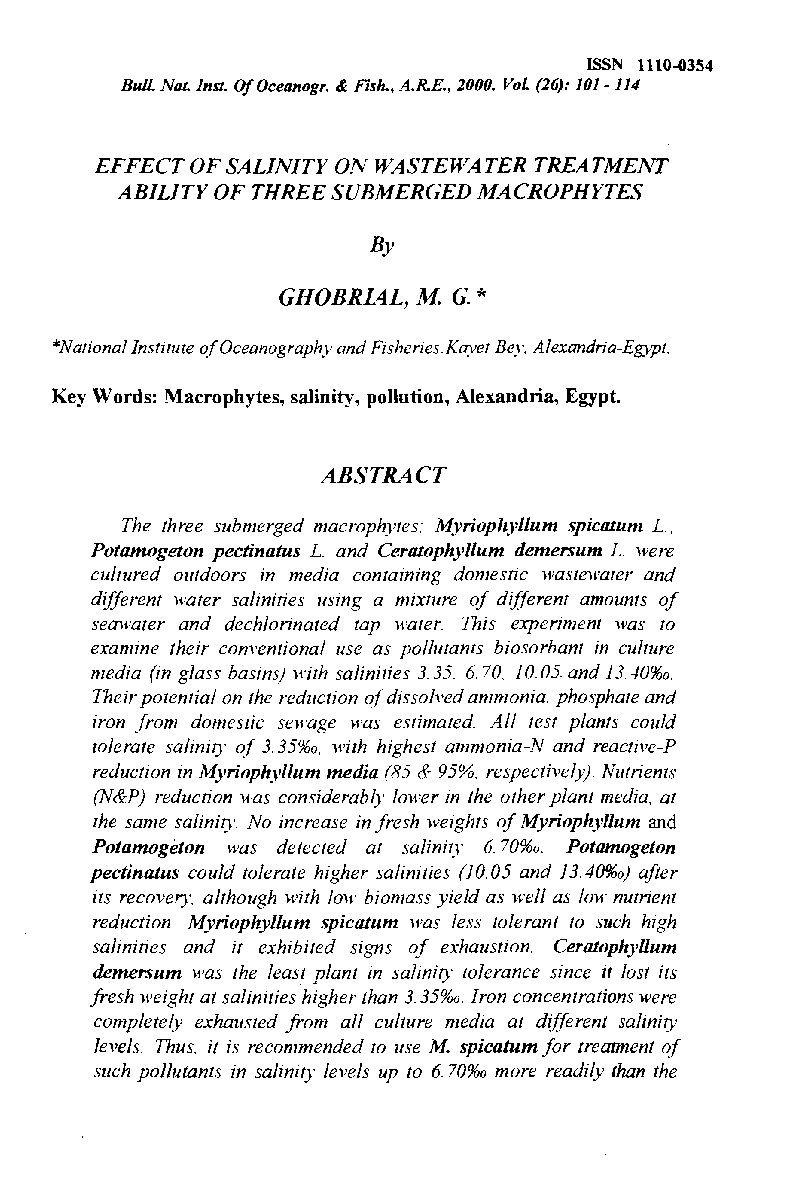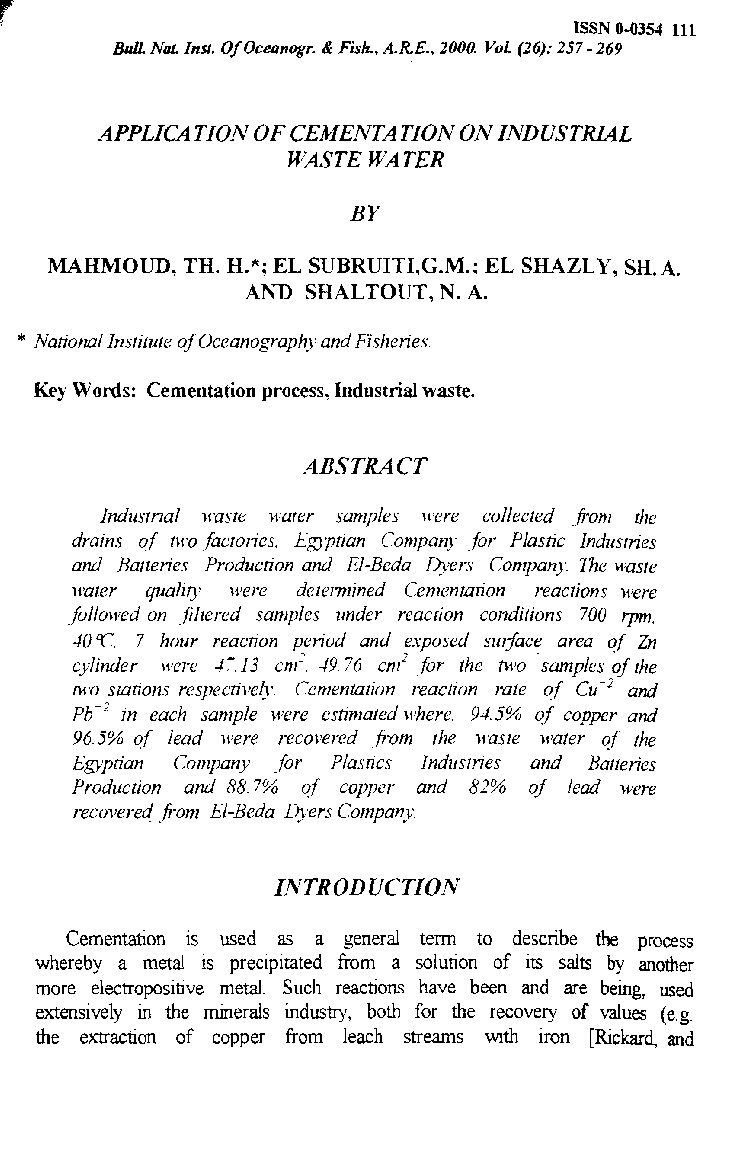Categories
vol-26EFFECT OF SALINITY ON WASTEWATER TREATMENT
ABILITY OF THREE SUBMERGED MACROPHYTES
By
GHOBRL4L, M G. *
*Nationallnstitute ojOceanograph.v and Fisheries. Kayet Bey. Alexandria-Egypt.
Key Words: Macrophytes, salinity, pollution, Alexandria, Egypt.
ABSTRACT
The three submerged macrophytes: Myriophyllum spicatum L.,
Potamogeton pectinatus L. and Ceratophyllum demersum L. were
cultured outdoors in media containing domestic wastewater and
different water salinities using a mixture of different amounts of
seawater and dechlorinated tap water. This experiment was to
examine their conventional use as pollutants biosorbant in culture
media (in glass basins) with salinities 3.35. 6.70. 10.05. and 13.40%0.
Their potential on the reduction of dissolved ammonia, phosphate and
iron from domestic sewage was estimated. All test plants could
tolerate salinity of 3.35%0, with highest ammonia-N and reactive-P
reduction in Myriophyllum media (85 & 95%. respectively). Nutrients
(N&P) reduction was considerably lower in the other plant media, at
the same salinity. No increase in fresh weights of Myriophyllum and
Potamogeton was detected at saliniTy 6.70%0. Potamogeton
pectinatus could tolerate higher salinities (10.05 and 13.40%0) after
its recovel)”. although with lOll’ biomass yield as well as low nutrient
reduction. Myriophyllum spicatum was less tolerant to such high
salinities and it exhibited signs of exhaustion. Ceratophyllum
demersum was the least plant in salinity tolerance since it lost its
fresh weight at salinities higher than 3.35%0. Iron concentrations were
completely exhausted from all culture media at different salinity
levels. Thus, it is recommended to use M. spicatum for treatment of
such pollutants in salinity levels up to 6. 70%0 more readily than the







